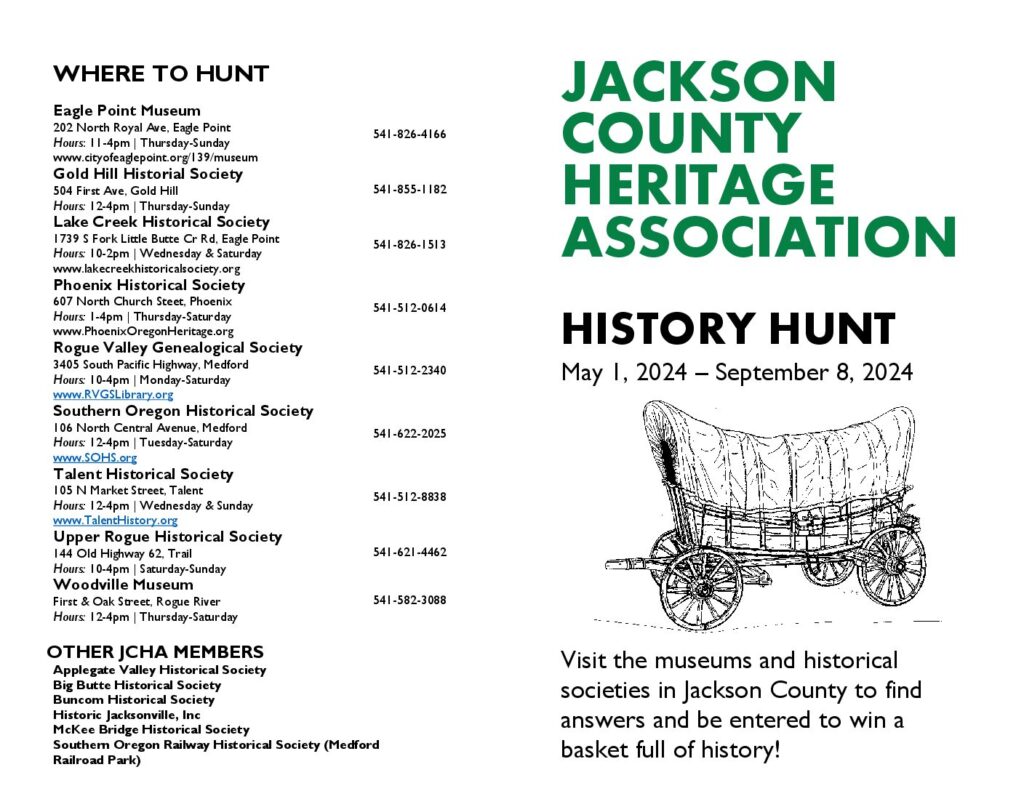Rader-Stanley Ranch “Eagle Point Ranching Tradition”
By Susan ‘Stanley’ Kendle
Most people have no idea where Rader Hills are located and the significance they might hold. If you follow the signs on Hwy 140 to the VA Cemetery, you will first turn north on Riley Road located southeast of Eagle Point. As you travel, passing Alta Vista Road on the left, you will go up a hill taking you over Rader Hills.
As to their significance, they may not mean anything to most people, but to our family Rader Hills stand for the beginning of a long time of ranching tradition. It began in 1852 when a young man by the name of Jackson Rader took up a donation claim in the Jacksonville area under the Donation Land Claim Act of 1850. A few years later, he and his wife Clara moved to the Eagle Point area, homesteading on the South Fork of Little Butte Creek. Two boys and two girls were born. The oldest son, John (our great-grandfather), was born in 1861 and Joseph eventually becomes sheriff of Jackson County in 1902.
When John was ten years old, his father left for Salem to serve as State Senator. He contracted smallpox at the capital and died. In an effort to not spread the dreaded disease, he was buried in Salem in a grave that the family was never able to locate.
At age 26, John married Emma Severance. They had met at school in Eagle Point. Emma’s family had originally come from California and lived in Butte Falls before moving to Eagle Point. The couple’s new home was the homestead and the beginning of Rader Hills Ranch. It is now commonly known as the Stanley Ranch. John and Emma had two daughters. Donna was born in 1888 and our grandmother, Ina was born in 1893.
Donna finished her schooling and went to work in a hardware store in Eagle Point. She eventually married Roy Ashpole who was the owner of the hardware business. Ina married John Harvey Stanley when she was 21 years of age. Harve (as he was known) had worked on various ranches up to his time of marrying Ina, so it was natural for him to settle into ranching with Ina on the Rader’s ranch. Harve and Ina had one child, Darrel, who was born in 1921. As time passed, Emma and John Rader moved to Eagle Point and left the ranch to Ina, Harve and Darrel.
During the time that Darrel was learning the ropes of ranching, a young lady by the name of Lois Simon was training to be a nurse at Henry Ford Hospital in Detroit. Lois came to Oregon to visit her family, who had moved here from Ohio in 1948. Her brother was working for the Stanley’s and that’s how they met each other. Darrel and Lois were married in 1952. It wasn’t long before my brother Eugene and I came into the picture. Just as our Dad took over the ranch operations when his Dad died, Eugene has now taken over after Darrel died in 1993. Eugene and his wife Connie live on the ranch, as well as their daughter Jenny and her husband Jeremy. I live in Medford, but still help out on the ranch most days. My husband has a trucking company, so time is spent helping there too.
Our Mother Lois, who still lives on the ranch in a new home she and Darrel built, has always kept a diary of ranch activities and the weather since she and Dad were married. It is a valuable resource for ranch operations and family history. The main crops have always been cattle and hay. In the earlier years, grain hay and dry land alfalfa were grown, as well as field corn. Historically, haying was done with horse drawn equipment and the corn was chopped and stored in a silo.
They operated a certified all Jersey cow dairy and sold the milk to Jorgensen’s Creamery until 1962. Our Dad never liked the dairy side of things, so when Grandma Stanley passed away, the dairy did too. Chickens were raised commercially for their eggs and turkeys were raise during the hard times as a cash crop for a company in San Francisco. The original homestead house is still in use. In addition to private land, the ranch has used public land for grazing the cattle for almost 100 years. Cattle drives from the Lake Creek area up to the summer grazing areas have now been replaced with trucks, pick-ups and trailers.
From the top of Rader Hills you can look northwest and see signs of change with the addition of a golf course surrounded by new homes, to Wal-Mart in the distance. Looking the opposite direction you see change too, but maybe if our great-grandparents were to come back, they would be pleased to see that the home they lived in and the barns they built are still being used for feeding cattle and stacking hay. The tradition they started has been carried on for five generations and we are hopeful this way of life can continue for another generation.
